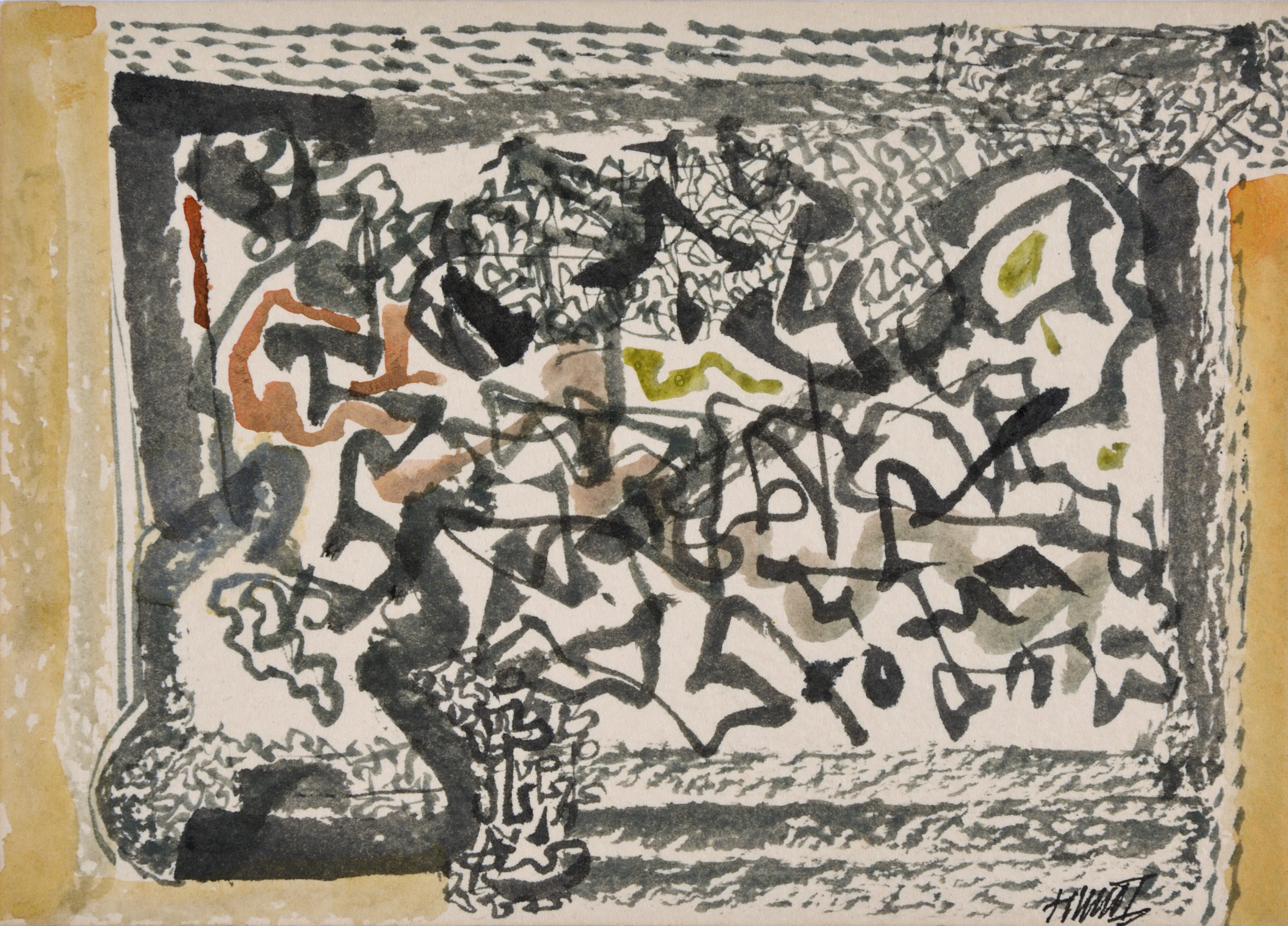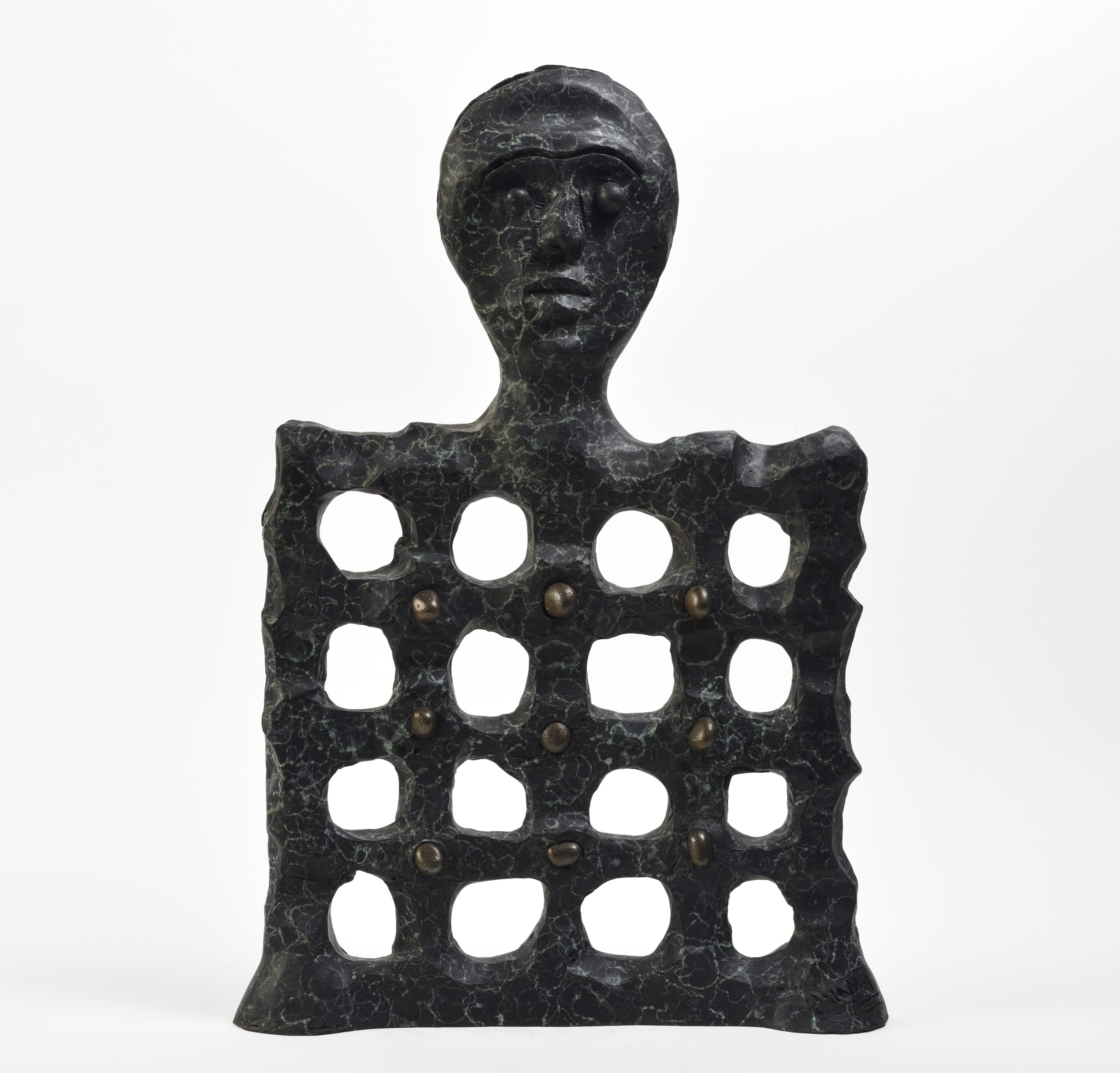At home with terracotta and bronze, Himmat Shah, who died recently, mastered every medium he touched
It is difficult to write on someone you knew very well in the early years of your respective careers, but lost touch for decades, bumped into him occasionally, learnt about him from common friends and then saw his works from time to time in reproductions and in galleries. That’s Himmat Shah for me.
I knew a very ebullient Himmat when we both studied at the Faculty of Fine Arts in Baroda during the mid-1950s and early 1960s. He studied as a non-collegiate student, learning directly from NS Bendre, while I did a formal course of graduation. He was very jovial and laughed a lot. He was a star in the garba dance during Navaratri with his graceful movements and loud singing of folk songs. Its bulandi often touched those who danced with him. As an artist, however, he struggled to find his feet in the idea of the modern, which fascinated him.
 Christ (2017), Bronze, 88.5 x 48.8 x 31.6 in
Christ (2017), Bronze, 88.5 x 48.8 x 31.6 in
I remember some of the still lifes he made in a quasi-cubistic manner painted with palette knife in those years. I also remember him making holes by burning the drawing paper with a lit cigarette and declaring them as his drawings. He also used to make drawings of distorted figures with partial affinity to the drawings of Souza and a vague reference to Picasso. Often, he applied enamel paint on paper on which he drew in pen and ink. He appeared to be a restless soul in search of his true self as an artist.
 Untitled (2019), Bronze, 11.5 x 9 x 8.2 in
Untitled (2019), Bronze, 11.5 x 9 x 8.2 in
After leaving Baroda in the early 1960s, he spent some time in Ahmedabad, where he made a big cement cast mural at St Xavier’s School. Later, he went to Paris on a French government scholarship, which made him confront modern masters in ‘flesh’ in the great museums. This fired him up to dig deeper into the human body and the spirit residing within. And if I remember it right, he worked at the Weavers’ Service Centre, along with artists like Arpita Singh and Jeram Patel. Later, he settled in Delhi and worked for a number of years at a studio in Garhi, before leaving for Jaipur where he lived till his death. He then turned into a full-fledged sculptor.
 Untitled (2004-09), Ink and watercolour on paper, 4.9 x 6.8 in
Untitled (2004-09), Ink and watercolour on paper, 4.9 x 6.8 in
I saw a series of his works in terracotta, with paper, sticks and stray materials to form what I call a landscape in sculpture. An unusual and unique mode in which he made little mounds or tiny hillocks with a flag flying atop, as though creating a space or an abode of numinous import. My wife Nilima acquired one of these and we still possess it.
 Untitled (2019), Bronze, 22 x 15 x 3 in
Untitled (2019), Bronze, 22 x 15 x 3 in
In the ensuing decades, he developed a highly individualised approach to sculpture, changing the idea of making a human ‘head’ in multiple ways with ingenious dexterity and inventive spirit. At times, inspired by Picasso, he devised a series of contorted human heads by turning them into disturbing presences where often the eyes disappeared and bodily features re-calibrated to make each head assume a new persona. It is rare to find such an image of human form, especially a human head carrying stirring sensations of a restless spirit.
I saw a series of works in his last exhibition held at Anant Art Gallery in Delhi last year, which appeared to be a culmination of his excellence in both drawing and sculpture. At home with terracotta and bronze, he mastered every medium he touched. He had transcended all the struggles of his early years and reached a stage beyond his Picassoid heads. I had a dialogue with him during the show where he narrated his mode of work beautifully. We remembered the good old days at Baroda and later, our being part of the seminal collective in 1963 called Group 1890. He enlivened our discussions with his hearty laughter. He was a livewire during our meetings in those days. Swaminathan was so moved by his earthy moorings that he saw in him a living specimen of a pristine spirit.
Himmat Shah lived the life of a recluse in Jaipur but practised day and night and produced an amazing array of sculptures, fiercely individualistic and deeply moving. Few could match that energy and vision.
A bit of a loner in his later life, he continued to work ceaselessly even when he reached his 90s.
— The writer is a painter based in Vadodara
Arts